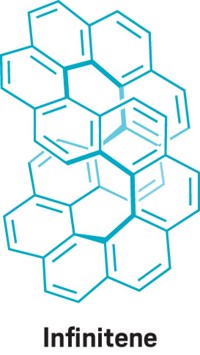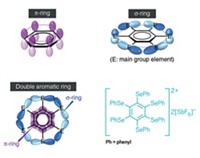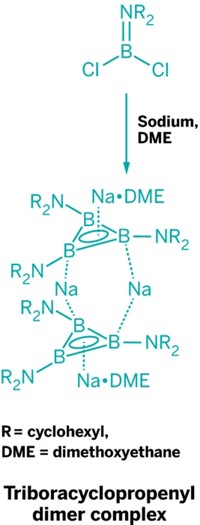Advertisement
Grab your lab coat. Let's get started
Welcome!
Welcome!
Create an account below to get 6 C&EN articles per month, receive newsletters and more - all free.
It seems this is your first time logging in online. Please enter the following information to continue.
As an ACS member you automatically get access to this site. All we need is few more details to create your reading experience.
Not you? Sign in with a different account.
Not you? Sign in with a different account.
ERROR 1
ERROR 1
ERROR 2
ERROR 2
ERROR 2
ERROR 2
ERROR 2
Password and Confirm password must match.
If you have an ACS member number, please enter it here so we can link this account to your membership. (optional)
ERROR 2
ACS values your privacy. By submitting your information, you are gaining access to C&EN and subscribing to our weekly newsletter. We use the information you provide to make your reading experience better, and we will never sell your data to third party members.
Synthesis
More On Corannulene Synthesis
April 23, 2012
| A version of this story appeared in
Volume 90, Issue 17
Stu Borman’s article on the scale-up of corannulene nicely points out the increasing utility of this molecule as various workers have devised means of scaling it up (C&EN, March 5, page 49). However, Borman should have mentioned the original synthesis paper, “The Synthesis of Corannulene” by Wayne E. Barth and Richard G. Lawton (J. Am. Chem. Soc.,DOI: 10.1021/ja00736a028). This remarkable publication resulted from the outstanding work of one student (Barth) and the creative genius of Lawton, professor emeritus in the University of Michigan chemistry department.
In particular, the highly strained hydrocarbon corannulene, C20H10, was understood by Lawton to not only push the idea of nonplanar aromaticity to the limit with its bowl-like array of five fused benzene rings, but also to show that the structure represented fully one-third of the carbon framework of buckyball, C60, discovered by Harold Kroto, Robert Curl, and Richard Smalley in 1985. Indeed, only the cautious tenor of the times prevented Lawton from mentioning this relationship that he had quickly recognized. More than 40 years later, the expectations and implications of the original work are still coming to fruition.
By Paul G. Rasmussen
Ann Arbor, Mich.
I was pleased to read the article on the new route to the synthesis of corannulene. In addition to the notable syntheses by Jay Siegel, Lawrence Scott, Andrzej Sygula, and Peter Rabideau, the article also touted the notable electronic properties of corannulene relative to its more famous cousin, C60. However, I was surprised that the first synthesis by Barth and Lawton was not mentioned. They not only predicted the correct electronic structure for corannulene but used that electronic disposition to derive the common name of corannulene. It is also valuable to put that first synthesis in historical context, as it was completed more than 40 years ago and highlights the determination and ingenuity of Barth and Lawton.
By Brad Savall
San Diego





Join the conversation
Contact the reporter
Submit a Letter to the Editor for publication
Engage with us on Twitter